What Are Transfer Tiers and How Do They Work?
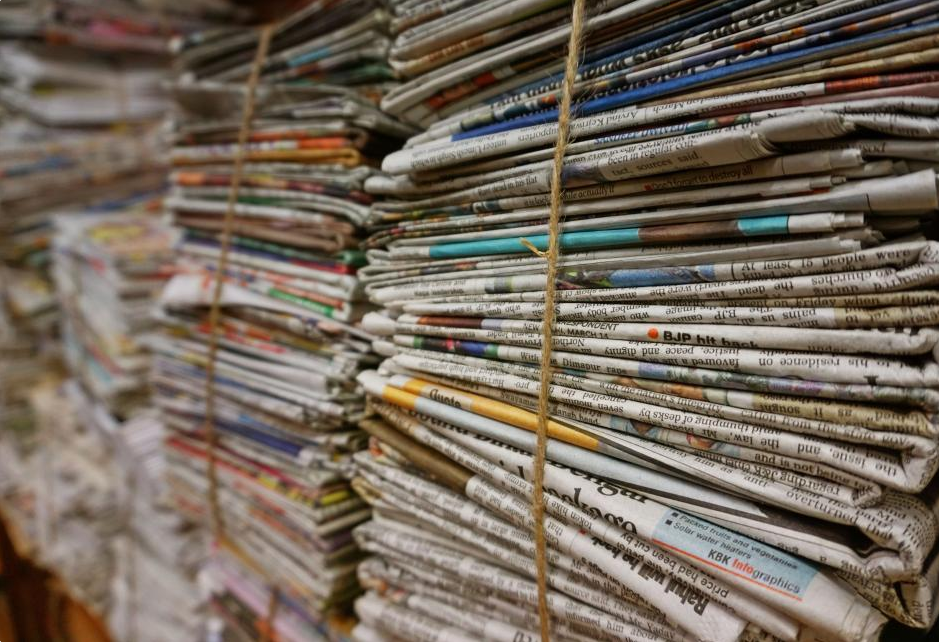
Now that the European Championship and the Copa America have ended, the European summer transfer window is in full swing. Rumors abound about which player is planning on starting a new adventure and moving to a new club, and it can be hard to tell which stories are true and which are just clickbait. That’s where the transfer tier system comes in – helping you understand how reliable a given source is when it comes to transfer rumors. This article will explain how the transfer tier system works and how you can use it to understand transfer news better.
What Is The Transfer Tier System?
The transfer tier system rates the reliability of a given source based upon how accurate they have been in the past. Sources are ranked in tiers from zero to five, a lower number meaning that a source is considered to be reliable.
If the stories and rumors they’ve published or posted have largely been accurate, they are assigned a lower transfer tier number, indicating that a source is reliable. If their rumors mostly have not come to fruition, they are given a higher transfer tier number, indicating an unreliable source.
What Do Each Of The Tiers Mean?
Tier 0
Tier 0 means that the information comes directly from the club itself, whether from its website, social media, or affiliated social media account, like @PSG_Inside for Paris-Saint-Germain.
An example of transfer news broken by a Tier 0 source is this official announcement of the signing of Kiernan Dewsbury-Hall by Chelsea FC:
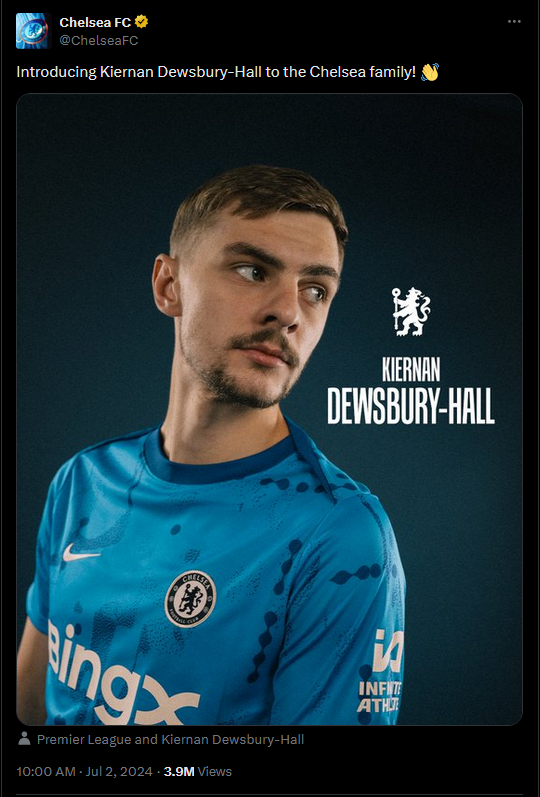
Tier 0 only includes these official club sources, not any persons or sources who are connected to the club.
Tier 1
Tier 1 sources have a proven track record of being reliable, either for a specific club or region or consistently across the board.

Recently, the most reliable Tier 1 source for transfer news in general has been @David_Ornstein, football correspondent for the Athletic after 12 years of working for the BBC. Originally focusing on reporting Arsenal transfer rumors, he has switched to covering major transfer rumors from around the world and has a proven track-record for getting his information right.
Most other Tier 1 sources do not cover such a broad range of transfer news, as they only have inside connections with a specific club or a few nearby clubs. Some examples of these kind of Tier 1 sources are John Percy, a Telegraph correspondent connected with many Midland clubs like Wolverhampton Wanderers and Aston Villa, and Paul Joyce, who reports on Liverpool and Everton.
Tier 1 sources may not break transfer news particularly often, sometimes only posting information a couple times per month, but when they report on a story, you know that it is accurate.
Special Disclaimer – Fabrizio Romano

Although Fabrizio Romano is widely regarded as a Tier 1 source and has consistently posted accurate information in the past, his precision has declined as his popularity has soared. Romano covers global football transfer news and frequently breaks exclusive transfer stories to his Twitter following of over 24 million.
However, many of his reports appear to be influenced by information provided by players' agents or clubs' media departments, aiming to shape the narrative around a player. While this information is not necessarily inaccurate, Romano often phrases his tweets vaguely, allowing him to claim accuracy even if the details are misleading to a less informed audience. Tweets like the one below look like breaking news, but are just regurgitated information.
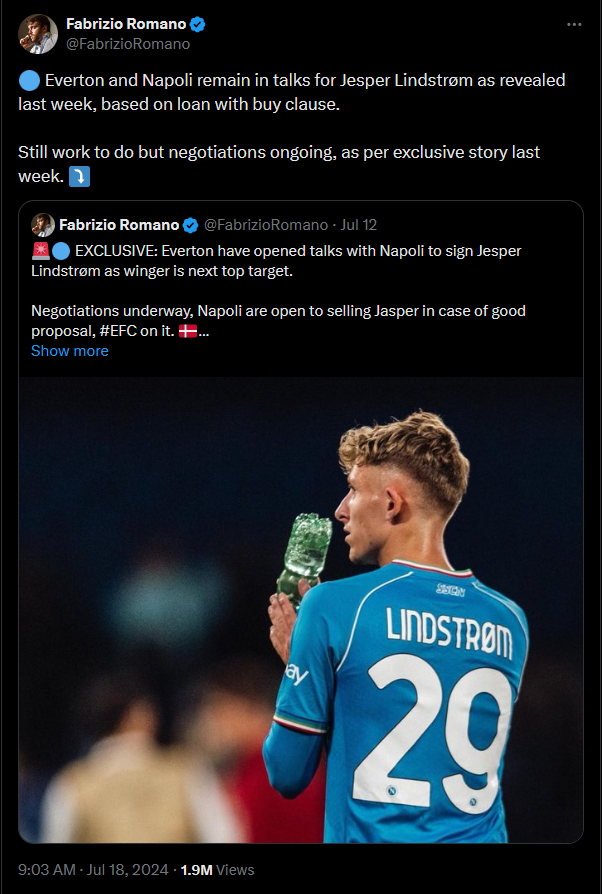
In some instances, Romano posts updates that offer no substantial new information but are presented as significant developments, such as his reports on Mason Greenwood’s transfer to OM. Additionally, Romano can be overly eager to report a transfer as completed when it is not, making him susceptible to last-minute changes.
For example, Romano recently reported that Georges Mikautadze from FC Metz had reached a verbal agreement with Monaco and was set to sign his contract, even using his trademark "Here we go!" to indicate the transfer was finalized.
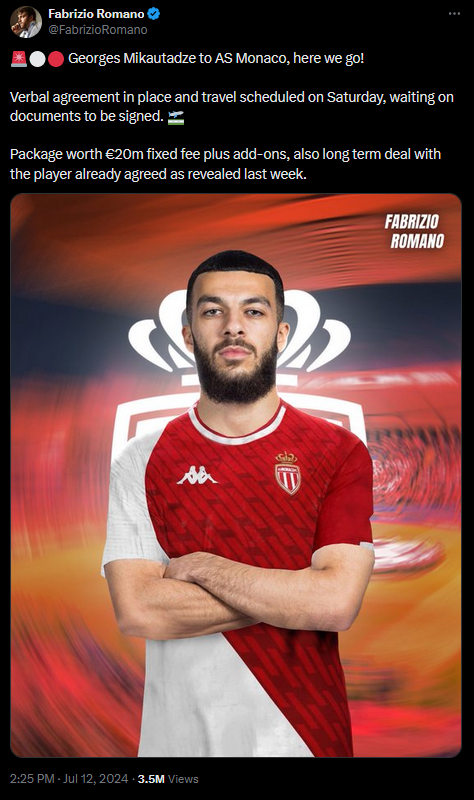
Shortly after, Hugo Guillemet, a Tier 1 source for Olympique Lyon, revealed that Mikautadze’s agent was swayed by Lyon’s offer, and the player was finalizing details with OL. Romano then had to backtrack on his earlier report.
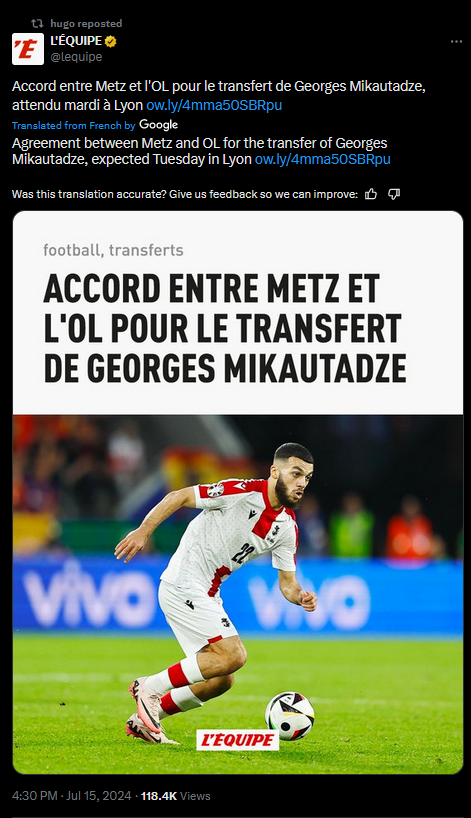
This incident highlights Romano's tendency to make more errors than other Tier 1 journalists. While he accurately reports on many stories that other Tier 1 journalists do not cover, his focus seems more on audience engagement and growing his Twitter following than on maintaining rigorous fact-based journalism.
In sum, I would put him in his own Tier 1.5 category, less reliable than a lot of Tier 1s, but more reliable than most Tier 2 journalists.
Tier 2
Tier 2 sources are mostly reliable at reporting transfer news, but are more prone to mistakes or inaccurate information than Tier 1 sources. It mostly consists of journalists affiliated with major newspapers/publications who are concerned about their own journalistic integrity and usually report news they believe to be true.
Tier 2 sources often have access to credible information and well-placed contacts within clubs, but their verification processes may not be as rigorous as those of Tier 1 sources. Consequently, while they aim to provide accurate news, there is a higher likelihood of inaccurate reporting.
More reliable news sources like the Athletic, the Telegraph, and the Guardian can fluctuate between being considered Tier 2 and Tier 3 in general, sometimes depending on the author of the piece in question. In other cases, particular journalists for a publication can have a lower tier rating than the publication as a whole. For example, Sami Mokbel is considered to be a Tier 2 source, but he works for the Daily Mail, which is regarded as a Tier 4/5 source.

When relying on Tier 2 sources, you should make sure to cross-verify the information with other Tier 1 or 2 sources, consider the author, and maintain a critical perspective.
Tier 3
Tier 3 sources have questionable reliability when it comes to transfer news, and can encompass a wide variety of Twitter or news journalists and “inside sources”. If a source is considered Tier 3, it usually has a hit-or-miss record when it comes to accurate news.
A Tier 3 source may often be the first source to break a specific story, since they have less reputation on the line if they happen to get it wrong, but at the expense of often being incorrect when it comes to a lot of stories.
For example, here’s Florian Plettenberg, considered Tier 3 for Bayern Munich-related news, getting it horribly wrong when it comes to Radu Dragusin’s move during the winter window.
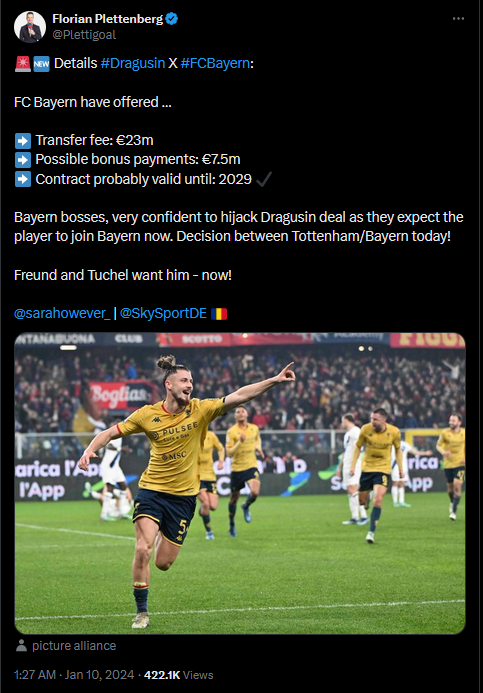
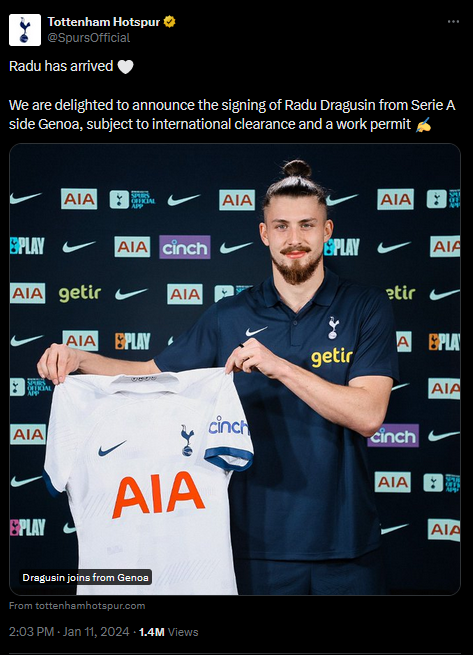
Tier 3 sources include journalists like Sam Dean (for Arsenal FC), Gianluigi Di Marzio (for anything non-Italian), Alfred Pedullia, TalkSPORT’s “Nreaking News” rumors, The Times, and Mundo Deportivo. All of these sources have broken and posted many accurate transfer news stories, as well as missing the mark on many more.
When you hear a Tier 3 source post a transfer story, it is best to take it with a grain of salt, and wait for confirmation from other sources before truly buying into it.
Tier 4
Tier 4 sources are mostly clickbait, but have some accurate information filter through from time to time. These sources try to win engagement through sheer volume of stories posted, without much consideration for how accurate the source may be.
Most "in-the-know" (ITK) sources fall into this tier. These individuals typically have one or two inside connections to a particular club, which can provide them with snippets of information. However, when these connections run dry or lack news, ITKs often resort to fabricating or embellishing stories to sustain engagement.
Even some more reliable sources can be considered Tier 4 for news that is not in their field of connections. For example, Florian Plettenberg can be considered Tier 3 for news related to Bayern Munich, where he may have some inside information, but is solidly Tier 4 for other news.
Other Tier 4 sources include news sources like L’Equipe, Goal.com, BILD, and Marca, as well as local news sources like the Manchester Evening Post or Liverpool Echo, who maintain a shred of journalistic integrity but frequently publish clickbait rumors. They mix credible reports with sensationalized or speculative stories to attract readers.
When dealing with Tier 4 sources, treat them with a healthy dose of skepticism, seek confirmation from more reliable sources, and understand their motive for engagement over accuracy. In general, the old saying applies: if it sounds too good to be true, it probably is.
Tier 5

There’s a reason that there is no Tier 5 category on Transfer Track, and that’s because any source considered to be Tier 5 has no basis in reality.
These sources focus solely on generating clicks and engagement, with no regard for factual accuracy. Any stories from Tier 5 sources that happen to come true are purely coincidental.
Examples include Mark Goldbridge, Football.london, the Daily Mail, the Mirror, other tabloid-like sites, and generic aggregators like Anfield Watch, the United Stand, AFTV, etc. that focus on clicks rather than facts.
How Should You Use Transfer Tiers?
Understanding the tier of a specific source helps gauge its general reliability, though it doesn’t guarantee the accuracy of any particular story. Always look for confirmation from multiple reliable sources before believing any transfer news. The tier system serves as a guide to help you navigate the complex world of transfer rumors from a broader perspective.
By paying attention to the tier ratings, you can avoid being misled by unreliable sources. Whether you're following your favorite club's transfer activity or keeping an eye on potential moves across the football world, the transfer tier system is a valuable tool in discerning fact from fiction.
How Do We Use Transfer Tiers At TransferTrack?
Under every transfer rumor, we rate the source on the tier scale from 0 to 4 (Tier 5 sources aren't even worth it to post), so you can see how reliable the source has been in general. These tier ratings have been generated based on our anecdotal experience and the general opinions of online users.
After this summer's transfer window ends, we will compile the records of all major transfer news sources to refine our objective ratings in our transfer source tier guide. Our ratings will be based on the volume of posts and their hit rate. Stay tuned!


